What Is Data-Driven Marketing?
Data-driven marketing is the process of gathering and using data to inform marketing decisions and personalize the customer experience. This data often revolves around consumer demographics and behaviors, enabling marketers to reach the right people, in the right place, at the right time.
Here are some examples of data-driven marketing:
- Targeting digital ads based on your past customers’ demographics
- Using insights from paid search campaigns to guide your SEO strategy
- Creating personalized content from user data (e.g., Spotify Wrapped)
- Emailing customers about products they’ve left in their online carts
Some of the most common data sources include:
- Customer relationship management (CRM) platforms, like Salesforce
- Audience research tools, like One2Target
- Market research tools, like Market Explorer
- Competitive intelligence tools, like Traffic Analytics
- Website analytics tools, like Google Analytics
- Email marketing platforms, like Mailchimp
- Social media platforms, like Instagram
Marketers can also conduct their own surveys and experiments to yield useful data.
Data-Driven Marketing vs. Traditional Marketing
Traditional marketing is any marketing activity that isn’t online. This means there are significant limitations to the analytical data marketers can collect and the ways they can use it.
While it’s possible to gather useful data (e.g., through focus groups), it’s usually:
- Relatively small in scope
- Static
- Difficult, slow, and expensive to collect
This means traditional marketers must often rely on past experiences and intuitions when making decisions. Because they don’t have data to guide them.
On the other hand, data-driven marketing utilizes digital technologies that enable:
- Large-scale data collection and analysis
- Real-time data monitoring
- Data-based automations
All of this helps to reduce costs, increase efficiency, and improve results.
For example, traditional marketers can’t determine the exact demographics of people who listened to their radio ad. Or see what percentage of people visited their website after hearing it.
But digital marketers can track the demographics of people viewing their online ads. And adapt their campaign based on performance metrics, like the number of sales generated.
The Benefits of Data-Driven Marketing
Using data in marketing can help teams make better decisions—and make them more quickly.
Let’s explore the main benefits of data-driven marketing:
Enhanced Customer Targeting and Segmentation
Gathering and analyzing data about customers gives you a better understanding of who they truly are. And who’s likely to buy from you in the future (i.e., your target audience).
The key thing is segmenting your market, or defining key types of customers. That way, you can:
- Create highly tailored marketing materials that drive better results
- Reduce distribution costs by targeting smaller groups of people
- Fine-tune your brand image to align with each segment’s values
For example, without access to relevant data, Lego marketers might have assumed all its end users were children. And conducted their marketing accordingly.
Instead, they discovered that their adult audience was growing and adapted their marketing strategy, Campaign reports.
In October 2023, Lego spent over $900K on its “Adults Welcome” digital ad campaign in the U.S. According to the AdClarity app.

Lego also publishes website content aimed specifically at this audience segment. And focuses on their specific needs—e.g., the desire to relax rather than play with Lego toys.
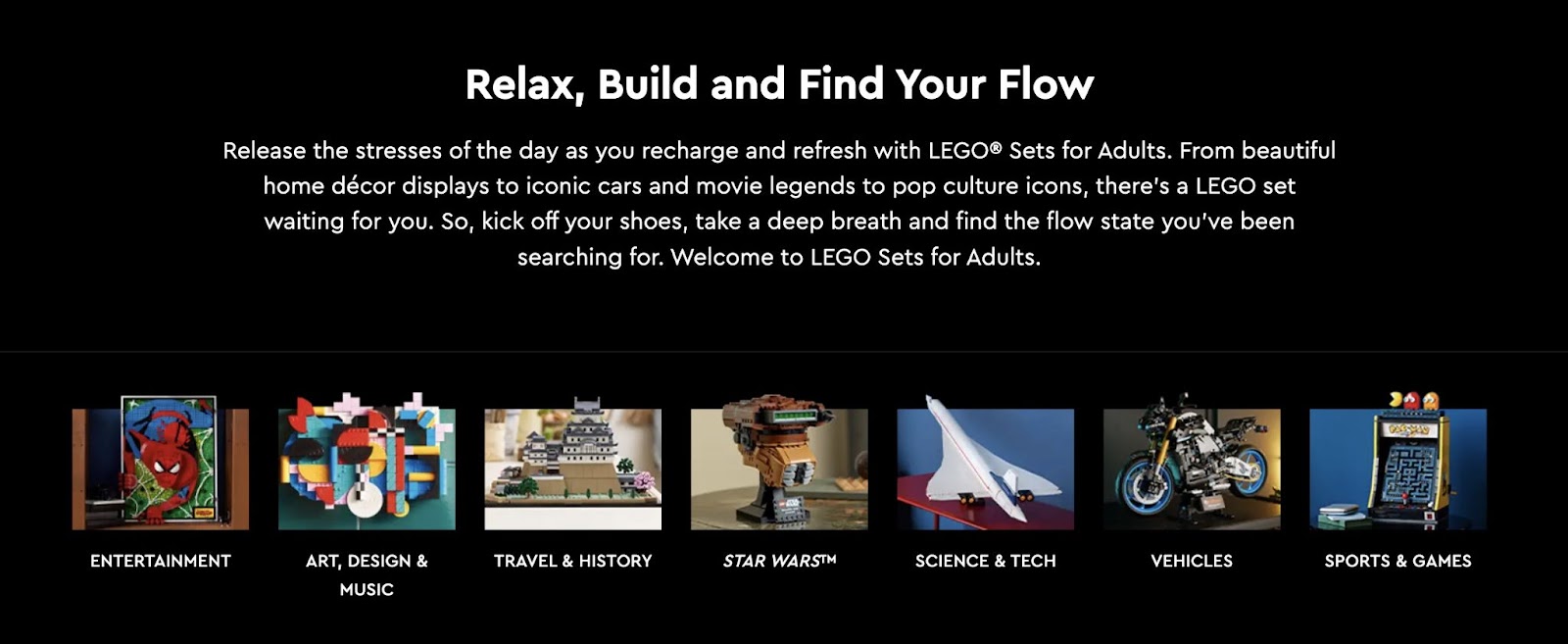
To make sure you’re not missing an important demographic, use Semrush’s One2Target tool.
Enter the domains of up to 100 competitors and the tool will provide an audience breakdown.
The “Demographics” report covers age, gender, and location data.
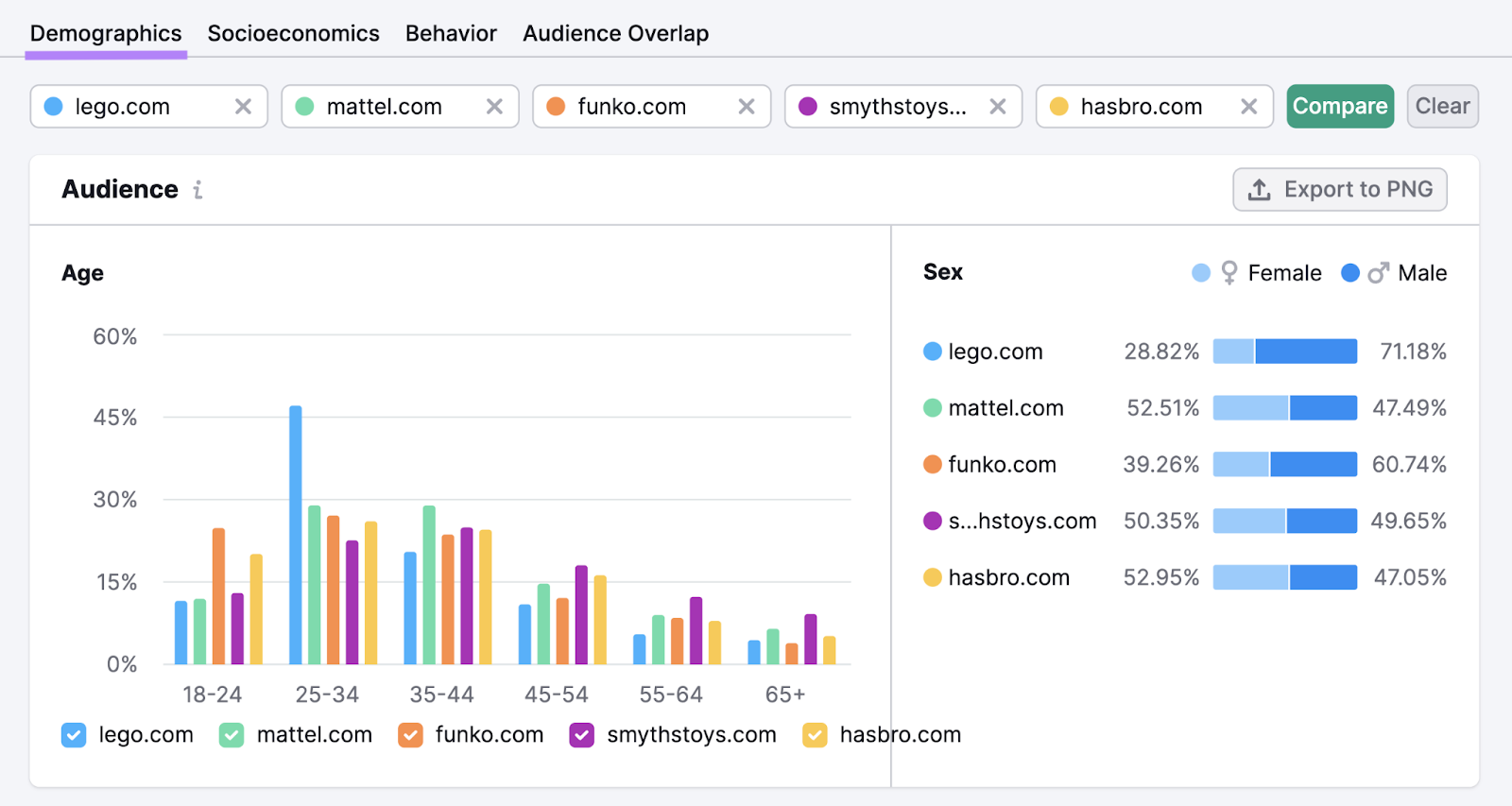
The “Socioeconomics” report contains charts for household size, household income, employment status, and education level.
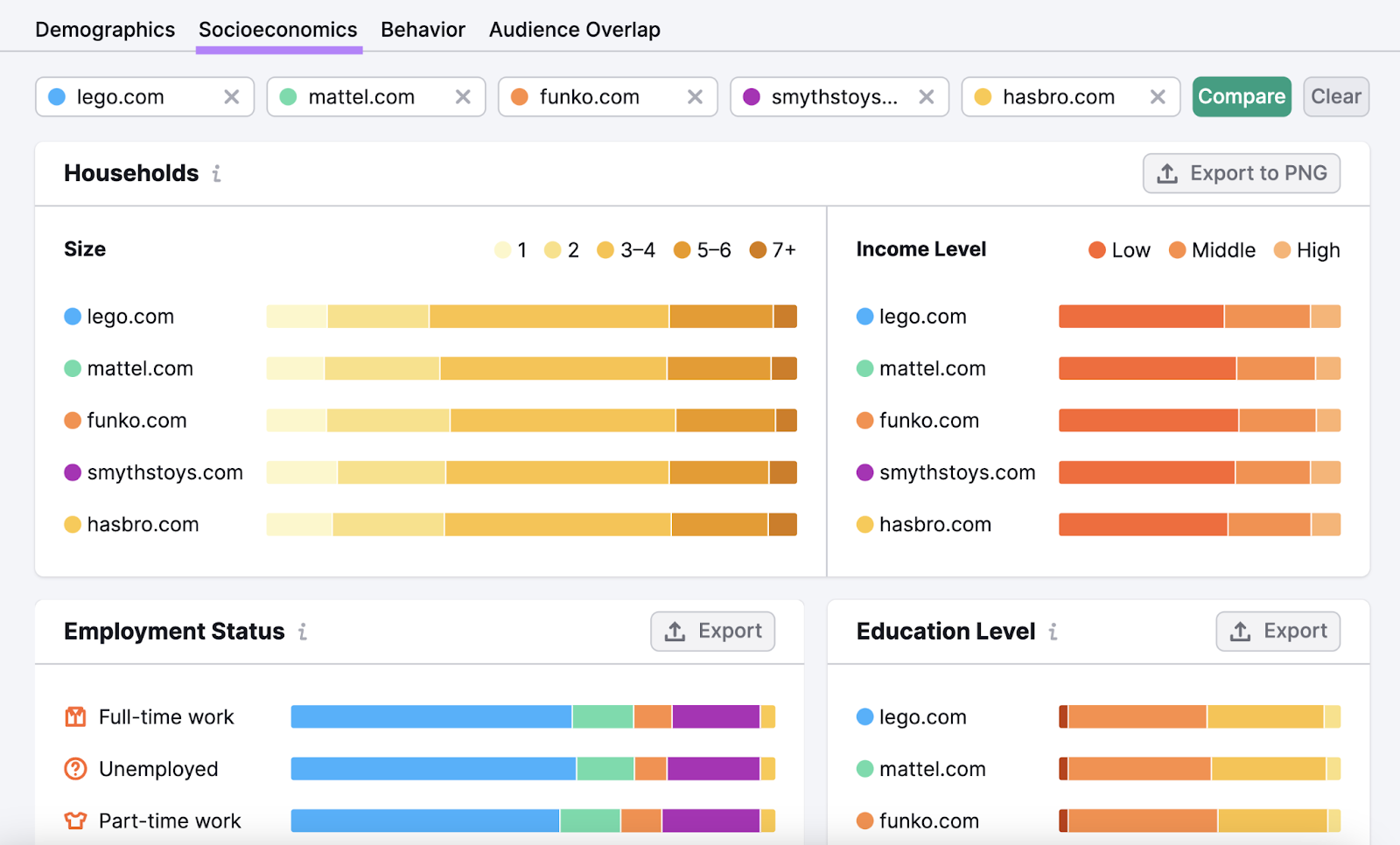
And the “Behavior” report covers social media platforms, interests, and device types.
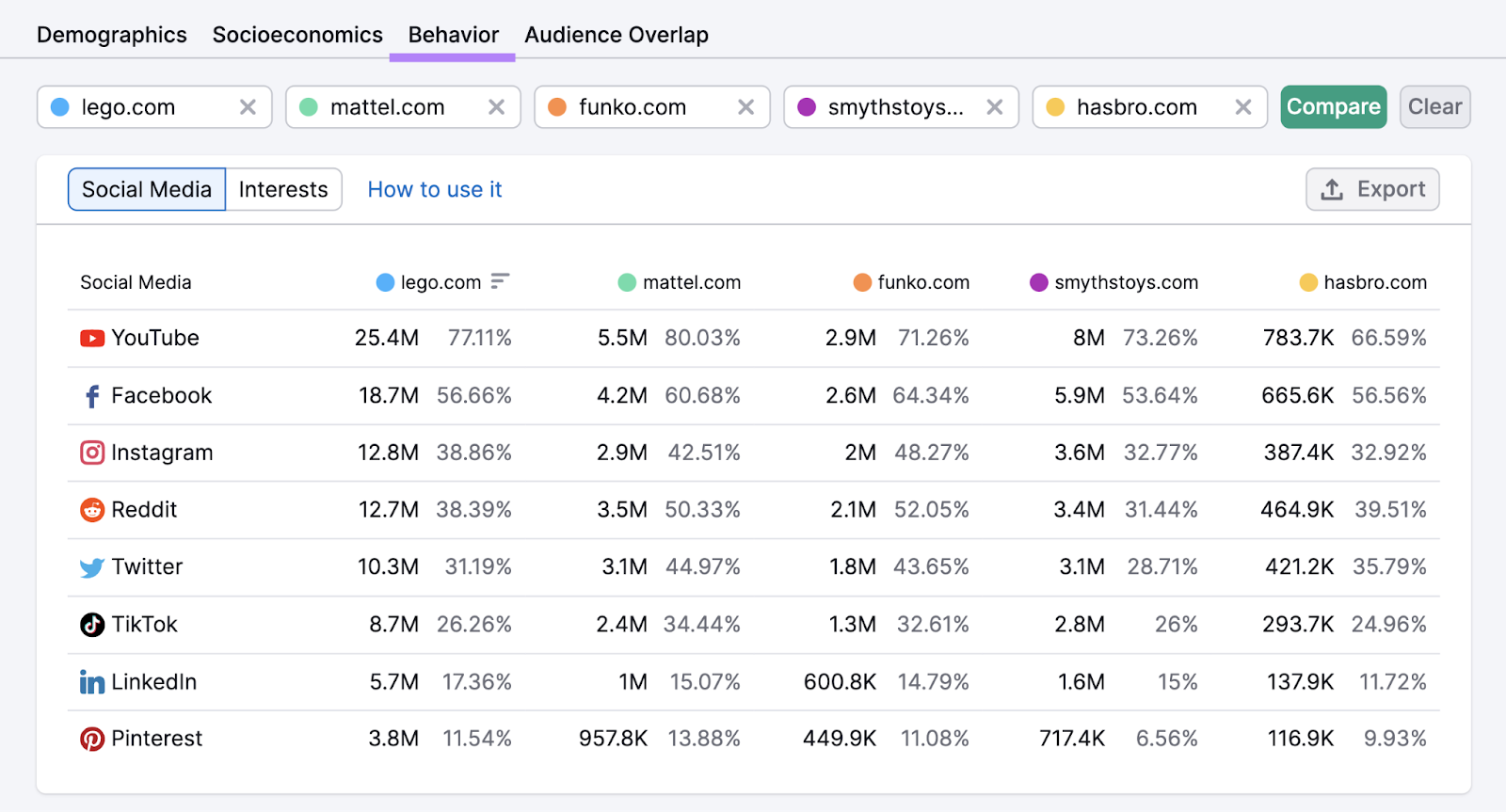
Improved Personalization and User Experience
Data-driven marketing enables marketers to deliver messages based on individual needs, preferences, and behaviors. And make their communications feel more human.
For example, graphic design tool Canva asks users to provide their name during signup. So they can send personalized emails.

The tool also asks users what they’ll use the platform for.

That way, they can provide suggestions and support based on the user’s most likely needs.
This approach creates a better user experience. Which can lead to more upsells and improved customer loyalty.
More Effective Resource Allocation
As part of a data-driven marketing strategy, you should track marketing KPIs (key performance indicators). So you can see what’s working and allocate future resources accordingly.
Here are some of the metrics you can track and act upon:
- SEO metrics (e.g., organic traffic, keyword rankings)
- Social media metrics (e.g., followers, engagement rate)
- Email marketing metrics (e.g., open rate, click-through rate)
- Content marketing metrics (e.g., time on page, conversion rate)
- Website engagement metrics (e.g., bounce rate, average session duration)
- Advertising metrics (e.g., return on ad spend, cost per click)
Where possible, use A/B testing (also known as split testing). This allows you to compare two options under similar circumstances and see which performs best.
For example, we used the SplitSignal app to see which title tags get more clicks in search results: those with the brand name at the front or those with the brand name at the end.
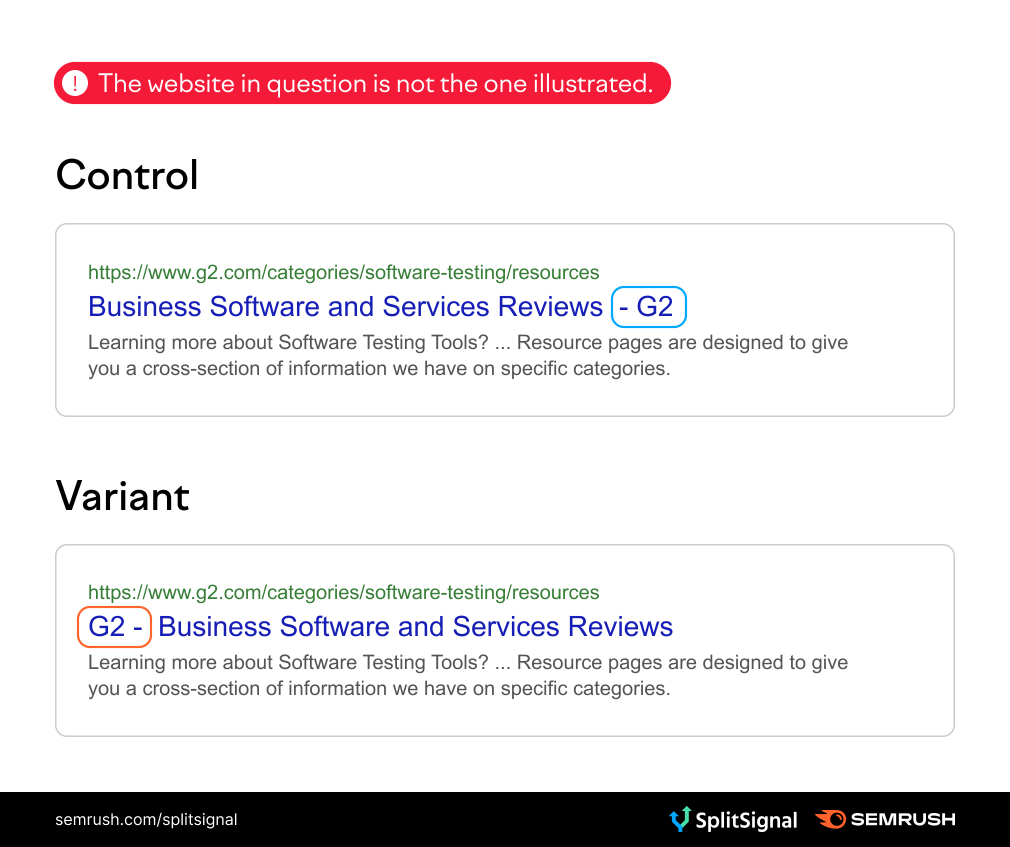
We found that front-loading the brand name reduced clicks by 6.7%. So, it’s generally not a good idea.
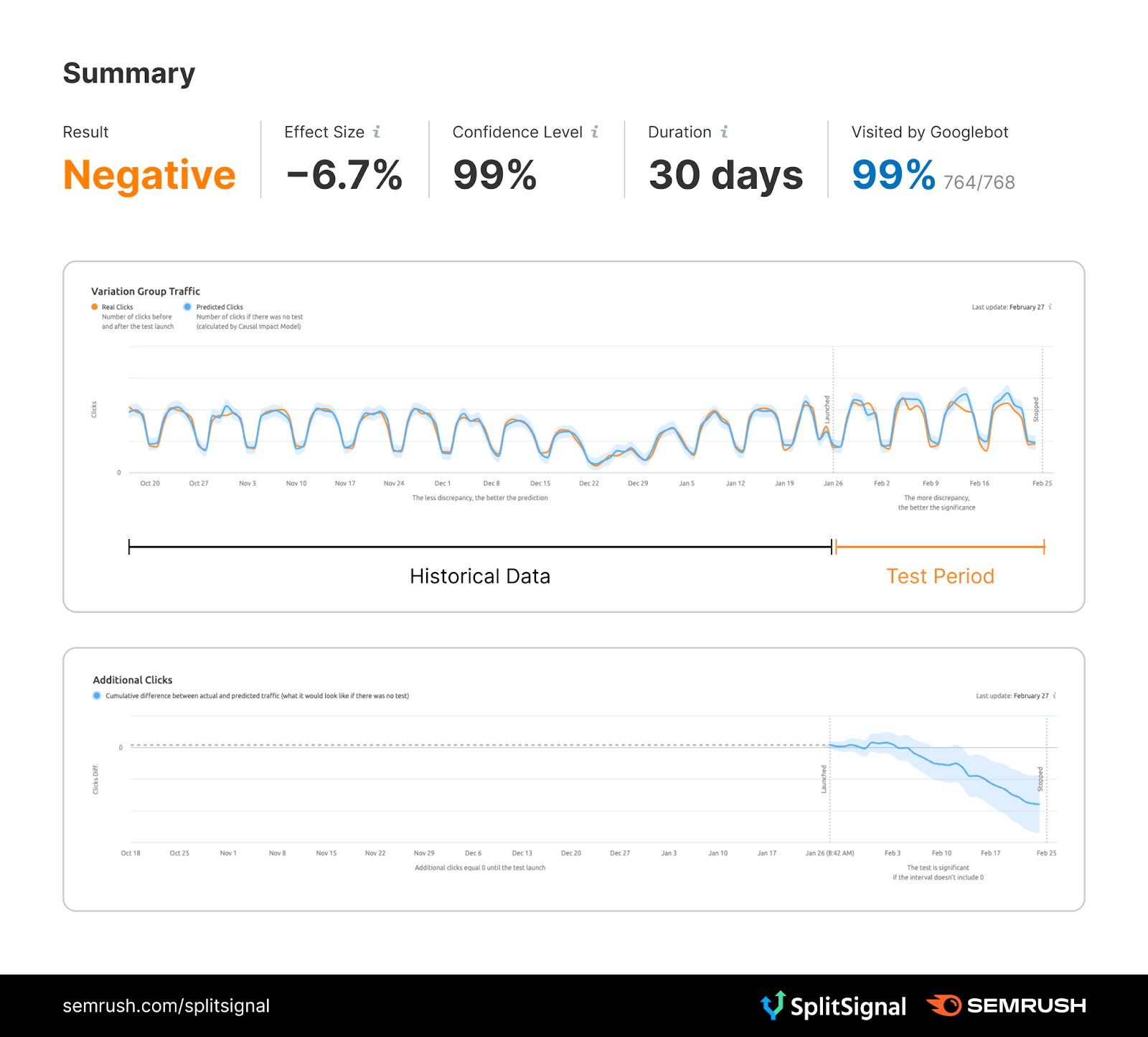
Streamlined Decision-Making
Data-driven marketing streamlines decision-making because it provides concrete reasoning for a specific approach.
There’s less need for stakeholders to hash out opinions and ideas. They can simply agree to go where the data takes them.
For instance, it’s hard to argue that one marketing channel is better than another if your sales numbers say otherwise.
To ensure effective communication, create clear marketing reports with key data and takeaways for stakeholders.
Head to My Reports in Semrush to create automated reports that look like this:
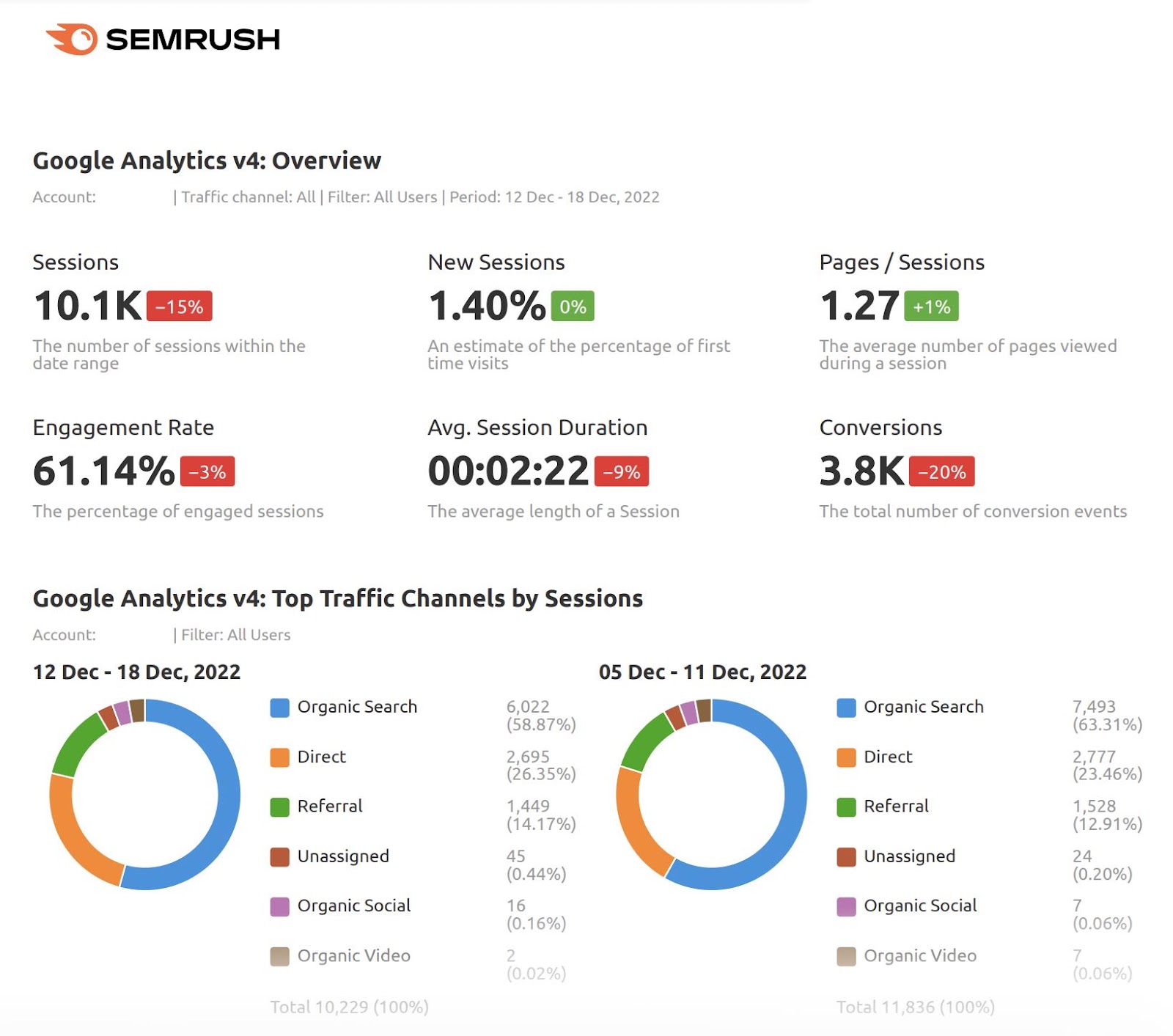
You can insert data from Semrush, Google Analytics, Google Search Console, and other sources.
The Challenges in Data-Driven Marketing
Let’s explore the main challenges in data-driven marketing and how to overcome them:
Collecting and Analyzing Data
Collecting and analyzing data is easier than ever. But it can still be a daunting process.
After all, there are so many tools and metrics to choose from.
Here are some quick tips for success:
- Invest in user-friendly, reliable, and multifunctional tools
- Incorporate data into your marketing strategy one area at a time
- Build analytics dashboards that allow you to focus on the most important metrics
If you don’t have your own data to work with, perform competitive research. To see what’s working well for your closest rivals.
For example, Semrush’s Traffic Analytics tool provides metrics like pages per visit, average visit duration, and bounce rate.

You can also see which channels drive the most traffic. And much more.
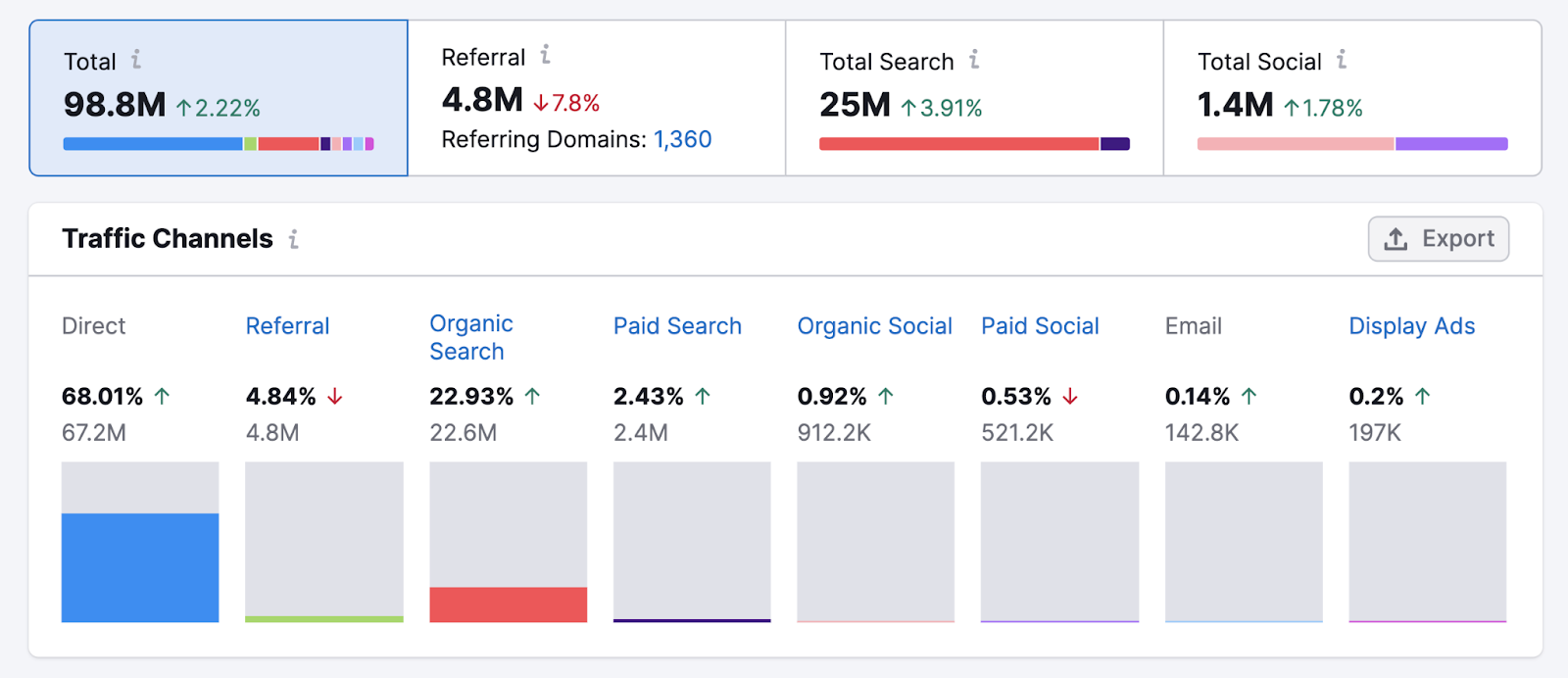
Lack of Data Literacy
Data literacy is the ability to understand and act upon data effectively.
If anyone in your team lacks data literacy skills, it can lead to poor decision-making.
Here are a few ways to overcome this issue:
- Invest in data analysis training for your staff
- Choose tools that provide clear results and takeaways
- Regularly review outcomes and investigate any issues
- Use automations to reduce the risk of error
Data Compliance
It’s crucial to collect, store, and use data responsibly. In many regions, there are data protection laws to follow.
For example:
- EU: General Data Protection Regulation (GDPR)
- California, U.S.: California Consumer Privacy Act (CCPA)
- U.K.: The Data Protection Act 2018
- Canada: Personal Information Protection and Electronic Documents Act (PIPEDA)
- Brazil: Lei Geral de Proteção de Dados Pessoais (LGPD)
Before adopting a data-driven marketing strategy, determine which regulations apply to your business. And establish clear policies for your team to follow.
How to Do Data-Driven Marketing
Here are the basic steps involved in data-driven marketing:
- Set goals. Define what you want to achieve with your marketing.
- Collect data. Gather relevant data from reliable sources.
- Analyze data. Look for insights and patterns in the data.
- Develop a strategy. Create a marketing plan based on your data analysis.
- Launch campaigns. Implement your marketing activities.
- Measure performance. Track the results of your marketing campaigns.
- Optimize. Adjust your strategy based on what the data shows works best.
Data-Driven Marketing Case Study
To better illustrate how data-driven marketing works, let’s explore the LiberEat x Semrush case study.
LiberEat, which offers technology for food businesses, decided that advertising wasn't sustainable for long-term user acquisition.
So, they used Semrush’s Market Explorer tool to find out how competitors got their traffic. And discovered that organic search played a significant role.
Here’s an example of what the graph might’ve looked like:
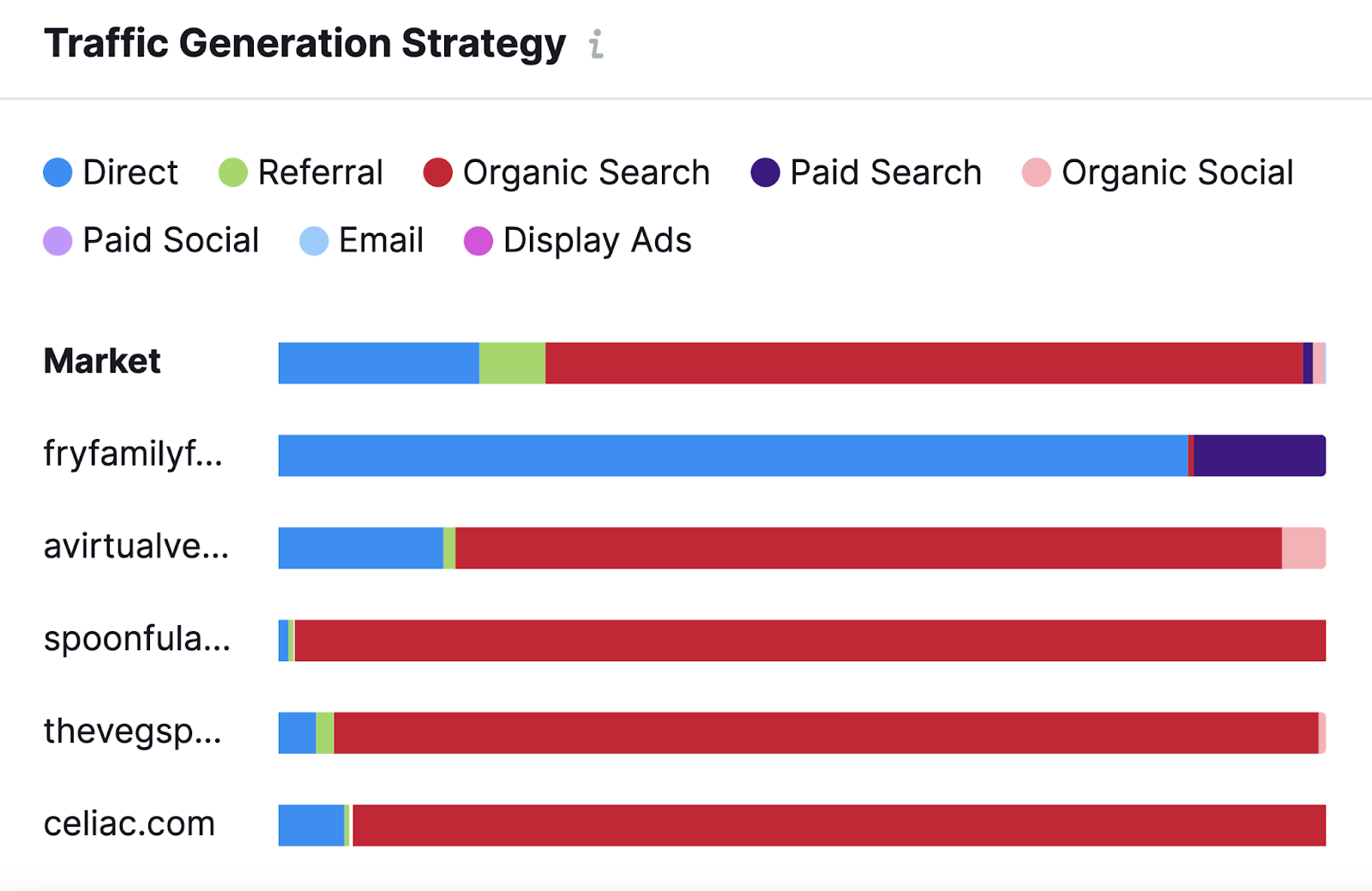
This drove the company to investigate their competitors’ Google rankings. With the Organic Research tool.
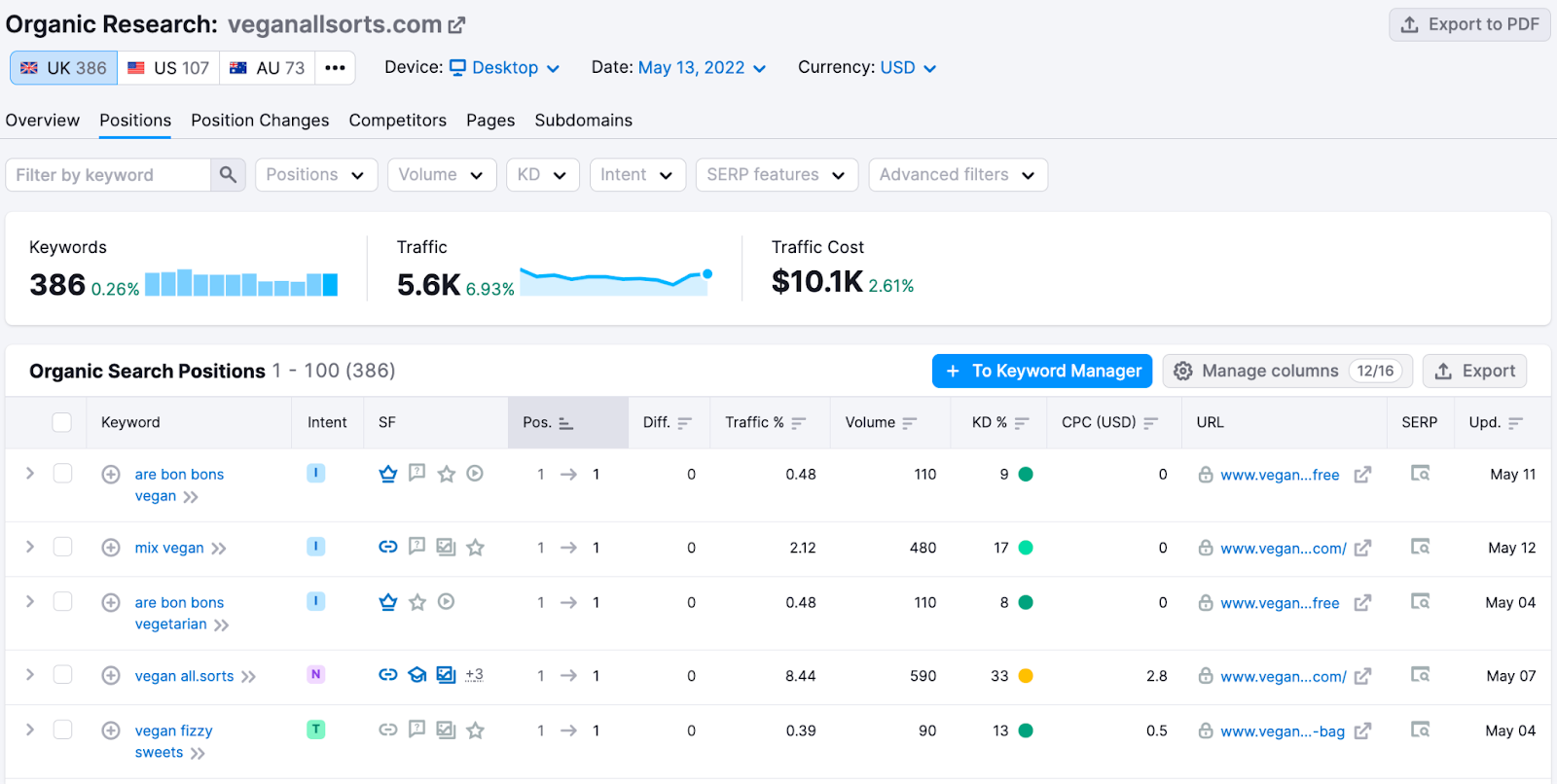
This acted as the springboard for further keyword research. Which allowed the company to identify relevant keywords with high business potential.
For example, they avoided search terms with a keyword difficulty score (KD %) above 50. Because they knew it’d be difficult for their relatively young site to rank for them.
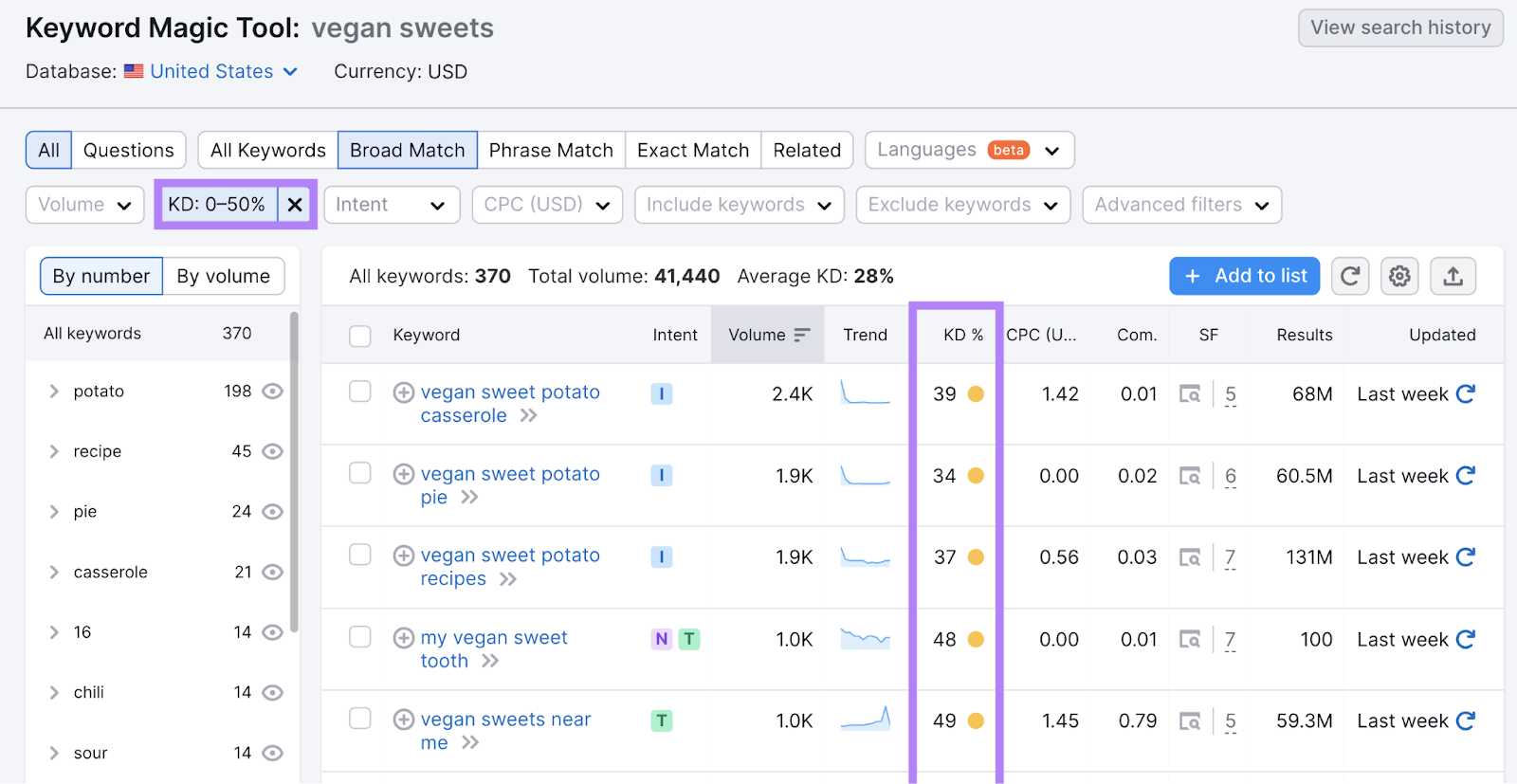
They could then prioritize their keywords based on factors like relevancy and the average number of monthly searches. And start creating content.
Without access to this kind of data, marketing teams would be left guessing which channels to focus on. And which keywords to pursue.
Start Gathering Insights for Your Data-Driven Marketing Strategy
With a Semrush .Trends subscription, you can gather valuable data-driven marketing insights:
- Learn about audience demographics, socioeconomics, and behavior
- Reveal your competitors’ top marketing channels
- See where your business fits into the wider market